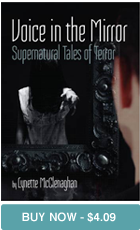Review – HP Lovecraft the Complete Works
June 22nd, 2015 | Published in American Gothic, Dark Tales, Horror, Reviews, Self Publishing, Writer and Research
Lovecraft’s own writing inspires horror writers to strive to write intelligent, thoughtful and well-crafted stories that don’t simply rely on gimmicks and cheap shocks. In his own words:
A serious adult story must be true to something in life. Since marvel tales cannot be true to the events of life, they must shift their emphasis towards something to which they can be true; namely, certain wistful or restless moods of the human spirit, wherein it seeks to weave gossamer ladders of escape from the tyranny of time, space and natural law.
 Review
Review
Lovecraft’s best feature is his capacity to spin a meandering tale which doesn’t diminish the reader’s interest to press on. Another highlight is that he avoids indulging in a gore fest; relying more on atmosphere, tension and a slow burning chill factor. Any Lovecraft story is a demanding read, ornate and dense; sometimes it works other times it misses the beat. However, readers who appreciate a cerebral read and writers who are serious about their own work recognise that is it essential to read the literary cannons, but to avoid replicating this style with modern horror. Lovecraft creates a vivid and impressive image of New England often casting pioneers of this country as predators, preyed upon and doomed. This quality is easily recognised and resonates with other cannons of early and pre 19th century Gothic and horror literature.
The Case of Charles Dexter Ward is amongst Lovecraft’s best works, the language and literary style often mesmerising. ‘…lying outspread under the early spring stars, steeples and gables rose dark and shapely, and salt breezes swept up gently from the cove north of the bridge.’ This is an example of the subtle evocation of isolated landscapes that so many of Lovecraft’s doomed characters find themselves drawn to, as does Ward. This story has shades of Oscar Wilde’s tale, Dorian Gray. Just as Gray becomes obsessed by his portrait and unable to overcome its evil influence, the painting in Lovecraft’s tale wields its spell over the protagonist. Here the protagonist’s ancestor compels him to possess it as it casts its evil over him, where ‘…an intangible miasma which centred in the carven vestige of an old dwelling rose to the intensity of material emanation’.







